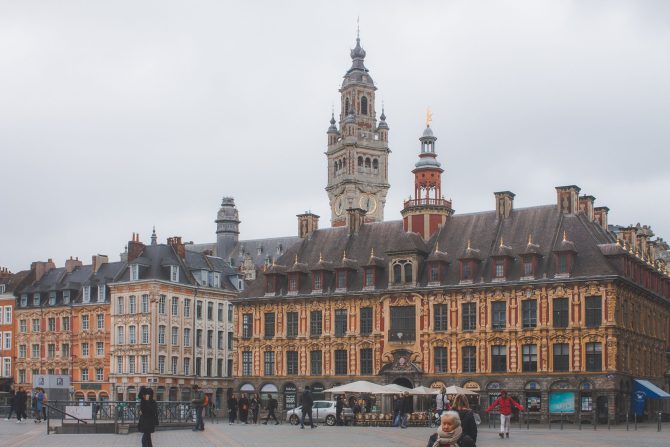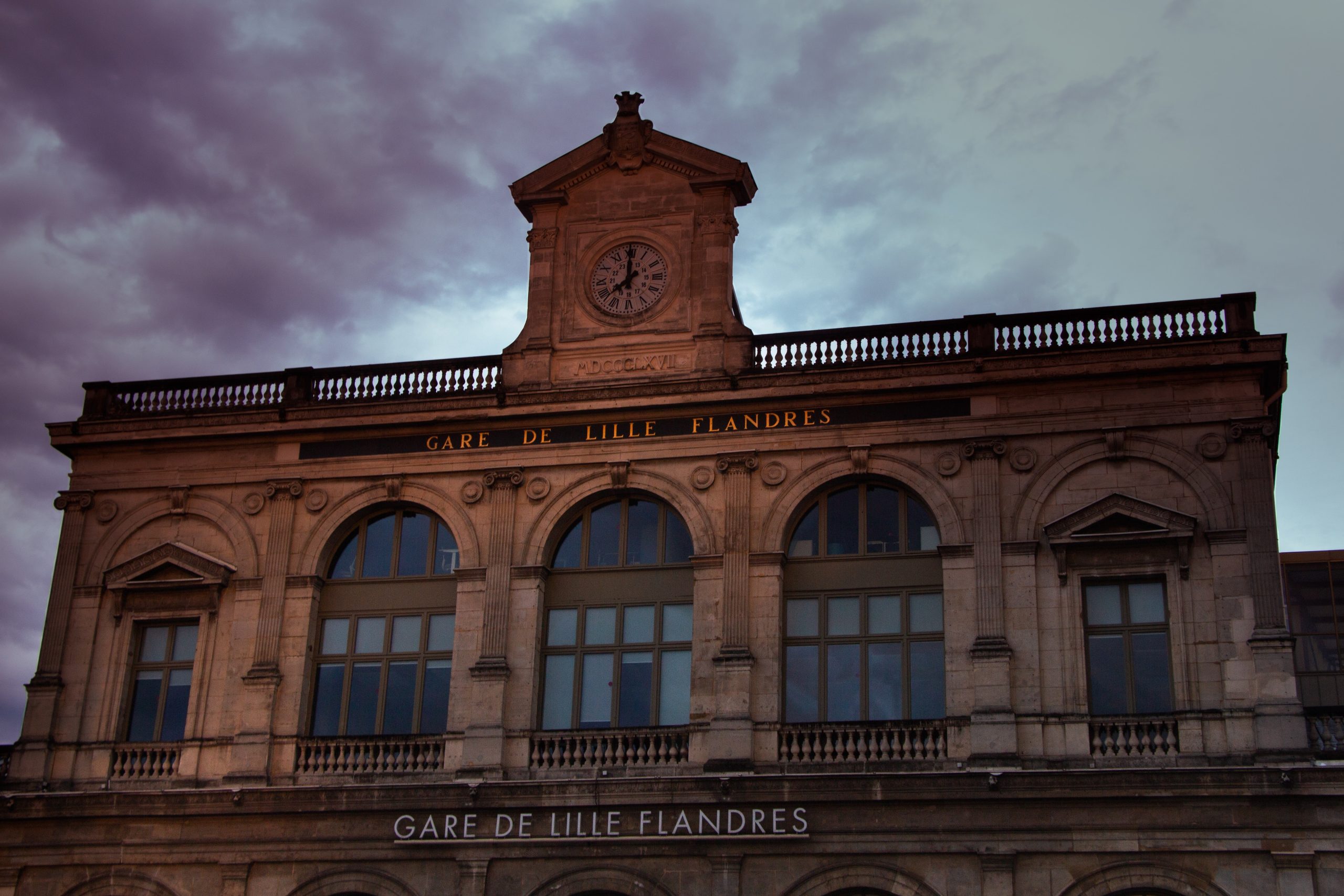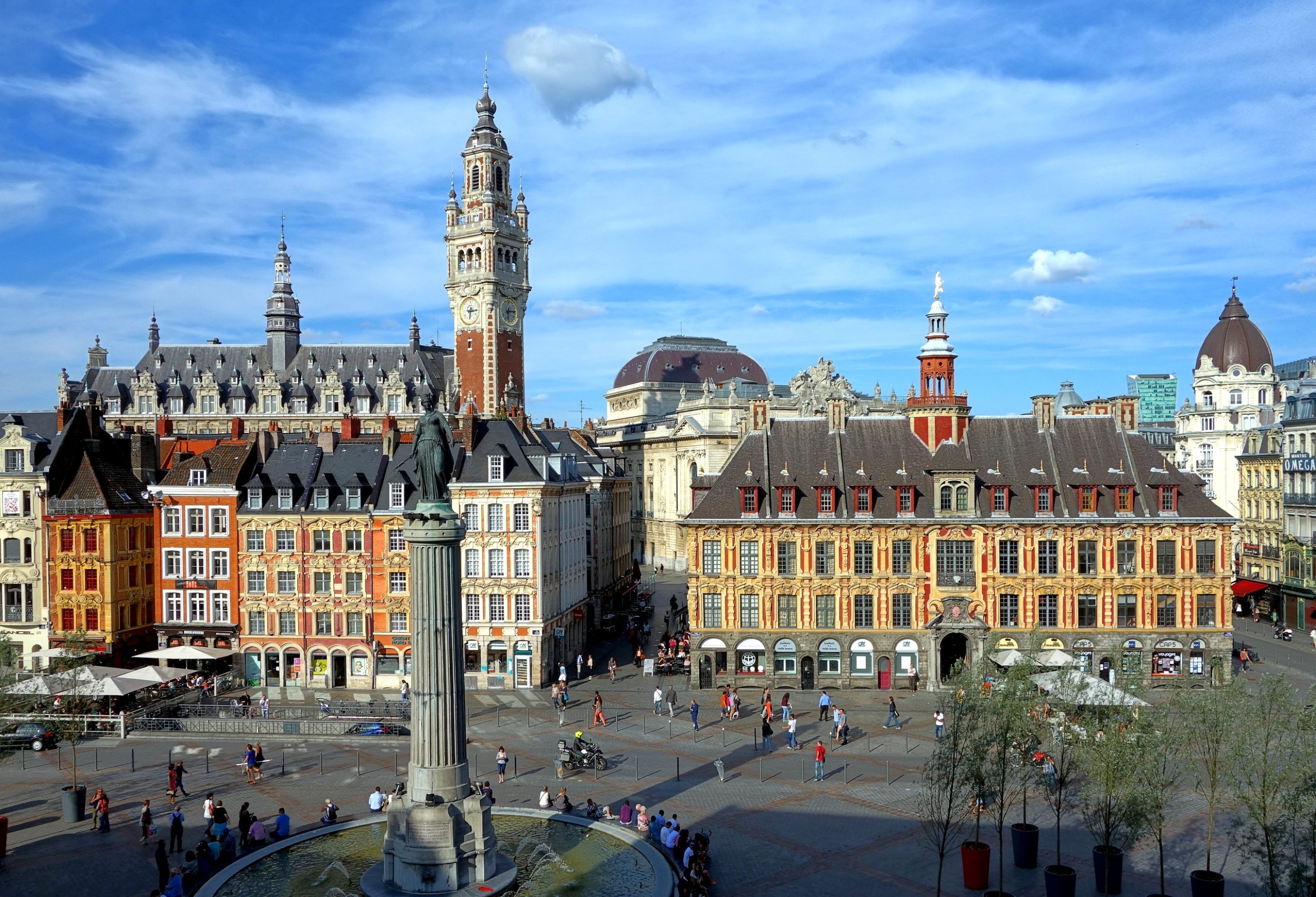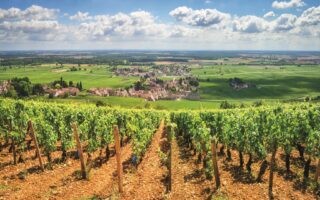Lille: French Property Location Guide

Sarah Daly discovers just how well connected this northern city brimming with culture and history is to Britain, France and Europe…
Lille is a beautiful and cosmopolitan city and one that has a vibrancy, partly thanks to the number of young people studying at one of its universities. It is small enough to explore on foot, which is how I decided to enjoy it. My journey through the city took me from Lille Europe station, where I arrived by train from Calais, through the oldest part of the city. Vieux Lille is an eclectic mixture of architecture, with Flemish and even British influences, a number of spacious squares, wide boulevards and narrow winding streets.
My meandering soon took me to the Hospice Comtesse Museum. The 13th-century Countess of Flanders, Jeanne, after whom it was named, was a fascinating woman. She not only did a lot to promote healthcare and women’s rights, but her economic policies also promoted the growth and development of many Flemish cities, including Lille, whose medieval prosperity was in part due to her governance.
When I visited, art installations wove through rooms filled with pharmacy displays, architectural decorations and paintings. The most unexpected of these was part of a temporary exhibition entitled ‘The Cosmic Serpent’. I was invited to remove my shoes and lie down in a room full of strangers, closing my eyes while a light and music show played around us all for 20 minutes. It was certainly one of the most surreal museum experiences I’ve ever had, but it was also weirdly relaxing and floating past exhibits like an ‘automatic writing’ machine that churned out English text when I touched it seemed almost normal afterwards.
I love visiting cities but find I often gravitate towards their green spaces. In Lille, these aren’t hard to find. The city is dominated to the northwest by the imposing five-pointed citadel, created by Vauban on the orders of Louis XIV after the city was seized from its Spanish rulers in 1667.

This vast fortification was where I headed next. It is surrounded by the canalised River Deale, and a large zoo seems almost lost in its extensive grounds. In fact, walking below the enormous walls, you could almost forget you’re in the heart of a city at all as the level path takes you through fields and woodlands alongside the river.
While I walked, many other visitors were cycling. Lille has an innovative bike rental scheme, which is included in the Pass Pass – a travel card that gives you unlimited travel on trains, trams and buses in the five departments that comprise the Hauts-de-France region, including Nord. With a monthly or annual subscription, this scheme is ideal for commuters and students. Given that the city centre houses around 250,000 people, while the wider metropolitan area has a population of 1.2m, public transport is vital and keeps the city centre traffic-free.
Metro and tram systems take you easily from the suburbs and villages beyond Lille into the heart of the city. From there, you can be in Brussels in 35 minutes, Paris in an hour and London in 80 minutes. Amsterdam is just over two hours away, as is the German city of Cologne. It takes three hours to get to Lyon, and Marseille is less than five hours away by high-speed train.
After my exploration of Lille, I was ready for some sustenance. I couldn’t resist the Meert Tea Room. Founded in 1677, it is still producing exquisitely delicious cakes that look more like works of art, and the lemon meringue I had was delicious. Then there’s the beer. This part of France is known for its breweries, and more small-scale production is on the increase with delicious results. Motte-Cordonnier in Armentières, just half an hour by train from the centre of Lille, has a number of rich beers to try, including René, a pale ale named for the current owners’ grandfather. What better way could there be to end my visit than to sit in the Grand Place, with a glass of beer in hand and watch the world go by?
University life in Lille
Lille resident Suzanne Bray says that access to high-quality, reasonably priced culture is one of the city’s main draws. She and husband Martin have lived here for 30 years and last year they moved from Fives, two metro stops east of Lille Flandres station, to Mons- en-Baroeul, which is within walking distance of the city’s other mainline station and Eurostar terminal, Lille Europ.
Suzanne says: “The city has loads going on, with theatres, exhibitions and concerts that are all either free or not drastically expensive. There are great museums and art galleries and it’s a good place for eating out. The large student population, of over 100,000, is one reason it has such a diversity of cultural offers.”
Suzanne is professor of British Literature and Civilization at Lille Catholic University, and moved to the city from the Ardèche in the south of France. “I much prefer the north. The weather is similar to London, where I spent my childhood and I find the people here so friendly. “I speak French at work and my colleagues come from all over the world. I’m involved with an English-speaking church in the city and the same is true: I meet people from all over the world who prefer to attend services in English. “If you’re thinking of moving here and don’t speak French though, this is the ideal place to learn as there are . a number of good language courses available throughout the city. There are also plenty of opportunities for teaching English if you are looking for part-time work.
“We were living in a 1930s house, which is the term used here for typical Lille three-storey houses whatever the date of construction. They are ideal family homes with a living room and kitchen on the ground floor, bedrooms above, and usually have reasonably sized gardens. My advice to potential buyers is to use a reputable estate agent and solicitor in Lille to buy your property. I’ve heard of people coming unstuck when they’ve tried to circumvent the system.
“We love Lille. It’s such an easy place to get around. There’s plenty to do, but it’s not overcrowded or expensive.”

Aline Semet is an estate agent at Citya Flandres in the city centre. She told me: “Vieux Lille used to be seen as one of the worst places to live, but a focus on regeneration means it has been transformed and apartments here are very much sought after now. Expect to pay €450,000 for a two-bedroom flat in great condition or with three bedrooms in need of some updating.”
Many buyers choose the leafy suburb of La Madeleine to put down their roots, however. Aline says: “It’s close to Vieux Lille and only 15 minutes from the city centre by bus or train. Marcq-en-Baroeul, with its own racecourse and large golf course, is also a popular choice. It’s slightly further out, but still only half an hour from the city centre. Lambersart is another very desirable location, with the area of Canon d’Or close to the Citadel the most prized.”
Prices in the suburbs will vary considerably according to the style, location and condition of the property, but Aline says buyers can expect to pay around €450,000 to €600,000 for a good-sized family home with a garden in Marcq or La Madeleine, or €350,000 for a smaller 1930s-style house.
For those wanting a more rural existence within easy reach of the excitement of Lille, Aline says that Verlinghem and Bondues are popular choices. Surrounded by fields and woodlands, they are still only a45-minute bus ride to the centre of the town, or less than 20 minutes by car. Many people who live rurally will drive to a station closer to the centre and catch a train or the metro from there. Ample, free parking is a feature of most of these stations, designed to encourage people to use public transport as much as possible.
Aline’s advice to anyone thinking of buying a property in Lille is to visit at different times of day. “Work out how close you want to be to the city and look at a map to get an idea of property prices: the closer you are to train and tram stations, the more you will pay. Walk there in the evening and find out whether it has the kind of atmosphere you’re looking for, whether that’s the buzz of activity that comes from the city centre, or whether you’re after a quiet residential area.
“It’s also worth paying attention to the age of a house and its energy rating. Houses dating from the 1950s and 1960s are notoriously hard to insulate and the same may be true of 19th-century Haussmann-style apartments, with ornate cornicing inside and exterior decoration. It is often easier to make older homes, and more modern ones, energy-efficient.”
“If you’re looking for an apartment, chauffage collectif will give you fixed monthly heating bills, which can be ideal if you plan to live there full time. On the other hand, chauffage individuel may bo more expensive per month, but a more practical option for a second home.
“Prices have gone up in the past 10 years and demand still outstrips supply,” Aline adds. “Reasonably priced properties move fast, but if you are a cash buyer, you’re often still in a strong position to negotiate. Since Covid, we find that most buyers now want properties with outside space-whether that’s a garden or a balcony. The richness of this city will always attract people though. With its theatres, music, cinemas, diverse population and numerous markets, it’s a place where you can really live well. And it’s a welcoming city. We always say that the climate is cold, so the people have warmth in their hearts.”
The unique mix of legal, financial and tax advice along with in-depth location guides, inspiring real life stories, the best properties on the market, entertaining regular pages and the latest property news and market reports makes French Property News magazine a must-buy publication for anyone serious about buying and owning a property in France.
Share to: Facebook Twitter LinkedIn Email
More in buying guide, lille
By Sarah Daly
Leave a reply
Your email address will not be published. Required fields are marked *




